A Love Letter Home to Guyana
An in-depth description of the history and landmark attractions of Guyana.
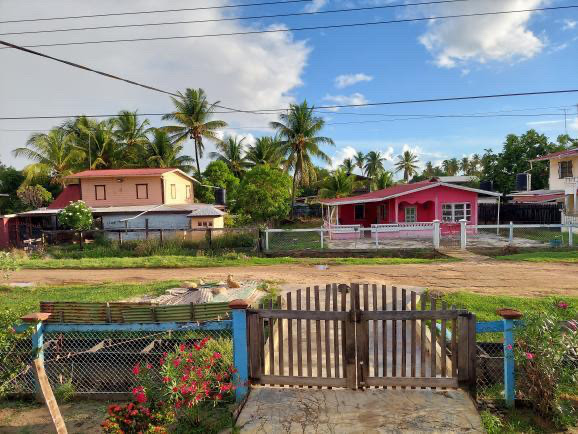
“The scenery is like a tropical movie: coconut and fruit trees everywhere. It’s like waking up to a paradise view every morning,” said Sean Harilall, after his most recent trip to Guyana. This photo was taken in Belvedere.
I) THE INTRODUCTION:
The discovery and exploration of one’s culture and history is a beautiful yet tumultuous rabbit hole, I think, with it oftentimes not being everything you thought it would be. Maybe it’s not enough. Maybe it doesn’t provide you the solace and comfort you thought it would. You start to feel more lost than you did before you started because now you know all this stuff; you can see everything laid out on paper, but how can you make it relate back to you or feel the connection you thought you would be born with?
We’re all born with an innate need for belonging and self-discovery, and where we’re from plays a huge part in that. I want to know as much as I can about where I’m from and who my people are; I want to show the world why that matters. “Why should they care about a culture that is not their own?” I ask myself. But, why then, have I learned so much about the cultures around me that aren’t mine?
We’re meant to learn about each other from each other. Our collective and individual histories have been seemingly erased from the minds of the world at large, leaving us to dig through bits and pieces and snippets of lost information in the hopes of finding ourselves. And, with that, comes the responsibility to share what we know with others so that their search is easier. Maybe they can take comfort in knowing that others care and are trying to learn with them.
I was hesitant to write this article simply because I’ve never felt as connected to Guyanese culture as I thought I should be. It’s hard to feel connected to a culture you aren’t immersed in most of the time. I didn’t know how to approach this topic, but I knew I had to.
When I was a ninth grader, I was saddened to see that there were so few Guyanese students at Bronx Science and even fewer people who knew what Guyana was. “Do you mean Ghana?” I heard that a lot and still hear it even now. “Not Ghana, Guyana. It’s in the Caribbean, not Africa,” I respond. “What’s the difference? But you look Indian though,” they say.
My peers simply assumed I was Indian or Bengali or anything other than what I was because they didn’t know any better, and I couldn’t blame them, despite how much it hurt to have a piece of who I am so easily erased and ignored. It’s not their fault they don’t know; Guyana’s an awfully tiny country, part of a very under and misrepresented part of the world.
These days, I’m more surprised when someone actually knows where I’m from! This bothered me for quite a while, and even now, I’m still hesitant to answer the question of where I’m from or fill out the race and ethnicity section of any survey, knowing that I’m still going to be reduced to just “Asian,” with no specificity, no recognition of an entire culture, just the name of the continent from which many of us originate. For a long time, I had no problem with being referred to as just that, but as I’ve grown to learn more about Caribbean culture, I’ve grown less accepting of being referred to by such a watered-down version of who I am.
So, to fill the role I wish I’d seen as a wee ninth grader, I present to you A Love Letter Home — an in-depth description of the history and landmark attractions of Guyana.
II) THE HISTORY & CULTURE:
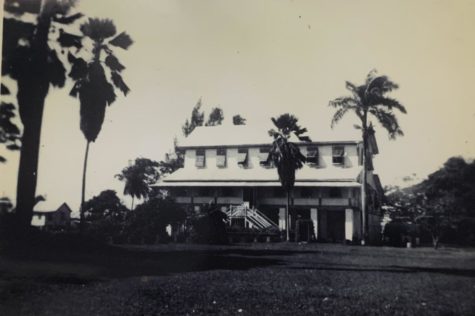
Guyana is the only non-island country recognized as being a part of the Caribbean (or the West Indies). It’s located on the northeastern corner of South America, just above Brazil. Prior to Dutch, French, and British colonization, it was inhabited by Indigenous peoples who referred to the country as “Guiana,” or “land of water.” Colonists brought with them a penchant for hierarchical structures, slavery, and indentured servitude, and, consequently, South Asian, Chinese, Portuguese, and African people.
As the slave trade came to an end throughout the West Indies, the British turned to indentured servitude to replace the forced labor of African slaves. Starting on May 5th, 1838, three hundred and ninety-six Indians from Calcutta, known as the “Gladstone Experiment,” were shipped to Guyana.
My maternal great-grandmother used to tell her family the story of how her parents had come to Guyana at the end of the 1800s. They were lured into servitude under the guise that the work was light, the quality of life would be far better than what they’d known, and that it would all be over in seven years — all lies. I’m not sure where exactly they were from, but I do know that hundreds of people had been piled onto a boat that took the dangerous journey across the world from India to Guyana. She recalled her parents having a baby boy with them; due to the conditions of the ship, he died. He was thrown overboard.
Hierarchical Structures & the Naming Process
In Guyana, people typically have multiple names, instead of just a standard first and last. People are known by their positions in society too — brother something, aunty something, cook man, or fisherman. Despite the Hindu practice of naming a baby after the Zodiac they were born under, the name your family and friends refer to you as is usually not as formal as that. In fact, any “nickname” you receive as a child tends to persist through adulthood. I’ve heard so many stories of people not knowing they even had a proper “book” name — their first and last names on their birth certificates.
Europeans couldn’t differentiate between their slaves and other laborers with such an informal system; somehow ‘big something, little something, or brother something’ wasn’t specific enough to catalog. So, they introduced the idea of babies taking the last name of their father. This practice led to a lot of confusion, as random and common last names were soon assigned to everyone, the most prolific being “Persaud.”
In fact, my mother used to tell me that the doctor that signed her birth certificate knew her father by that last name and so he gave it to her. Yet, all nine of her siblings have different last names — despite all possessing the same biological parents — simply because different people knew my grandfather by different names.
Guyana’s Economics
Guyana is a large producer of rice and sugarcane, along with its derivative products like rum and molasses, and it is incredibly resource-rich due to its proximity to the Amazon Rainforest and its abundant bauxite and gold reserves. Despite all its vast natural resources, Guyana remained one of the poorest countries in the world until 2015, when a number of deep-water oil reserves were discovered. “[Guyana] is largely an agricultural-based economy, but more recently the oil and gas industries form a major component of the economy,” said Indera Persaud, an Honorary Consul for Guyana.
Guyana sold the rights to these oil reserves due to a lack of labor-force and technology which prevented them from extracting the oil themselves. “The workforce and students in the high schools need to be trained for the new oil and gas industries,” said Persaud. Large companies like Exxon, Mobil, and Shell own most of the rights to the oil now, meaning that the opportunities and economical input that could have been given to the people have been pocketed by the government that sold their rights and refused to invest in their economy.
Cultural Divides
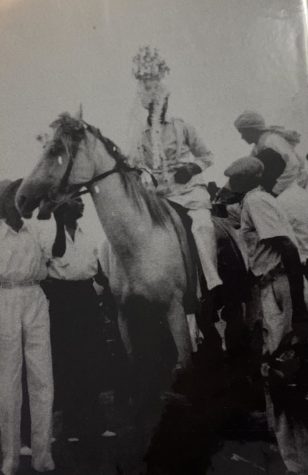
Along with a painful history of slavery came a beautiful mixture of so many cultures. Unfortunately, in order to keep their laborers subordinate, colonists exacerbated and capitalized on the differences between each group, thus fomenting division. Damaging stereotypes created by British plantation owners began to unfold for both Afro-Guyanese and East Indians, the two largest ethnic groups in Guyana. Many of these typecast survive to this day. For example, black people were looked down upon for not working for meager sums of money and not signing indentured labor contracts, which dedicated years of service to plantation owners. The Indians were derided and then applauded by the British for doing this in their place.
As time passed, it became “improper” and “classless” to represent East Indian culture instead of conforming to the British way of life. For example, instead of wearing bright, colorful traditional Indian outfits, people began to adopt Western clothes so as not to be looked down upon. In fact, the British scorned anything that would tie people to Indian culture — their traditional foods, language, customs, holidays, names, clothes — all in an effort to erase the culture.
Pitting these groups against each other allowed the British to maintain their upper hand in regulating cheap labor. In fact, in the early 1900s, my Indo-Caribbean great-grandfather was the head butler of a sugar plantation, known as Bath Estate in West Berbice. This, along with him owning the family’s convenience shop, led to him being one of the most wealthy men in the country, and he gained quite a lot of respect from those in his community. He was one of the only people around to own a radio and a kerosene fridge, yet his family scrimped and scraped in order to get by.
Eventually, by the late 1960s and early ’70s, Guyana became independent, and this racial divide shifted to the ideological realm. Political leaders now aimed to gain votes by undermining any peace, cooperation, and understanding between the people of the nation. My aunt recently told me a story about how she and a little black girl had been neighbors, schoolmates, and friends. They’d share lunches and play together after school — they were best friends, just regular children. She recalls, however, that the girl would get bullied at school for being black and that their families forbade them from being around each other throughout the early 1970s. Racism between minority groups had prevented children from being friends which was only the smallest of struggles this divide caused.
The Food
Guyana’s traditional food serves as a reflection of its history and is a combination of African, Indigenous, and Asian influences. For example, Guyana’s national dish, pepperpot, is an ode to its roots and is typically served on Christmas day regardless of one’s religious affiliation. It was originally created by the Indigenous people of Guyana, Amerindians, and is a meat stew made with vegetables, fruit skins, and cassareep (ground cassava flavored with brown sugar and cinnamon, often used as a meat preservative).
Another very popular dish, inspired by African influences, is cook up rice. Despite being known as a “poor man’s dish,” it is eaten by the affluent and impoverished alike. It’s an “everything but the kitchen sink” one-pot meal and was meant to be a way of using up the last of a week’s rations before they spoiled. So, whatever meats, vegetables, and rice you had would be cooked in coconut milk until you have a very rich, moist dish.
Chinese and South Asian indentured laborers were brought over to Guyana after the abolishment of slavery to keep up with the demand for cheap labor on the sugar plantations. With them, each brought their country’s favorite foods. “Guyanese-Chinese” is a very popular cuisine subtype characterized by the inclusion of wontons, fried rice, and chow mein, which are on the top of everyone’s “fast food” list. And, of course, you can’t forget the South Asian influences in our cuisine. My mom loves to joke that “Guyanese people could curry anything,” meaning that there really is a curried version of almost anything — the most popular being chicken curry.
You can learn all about some of the most popular Guyanese dishes here.
The Celebrations
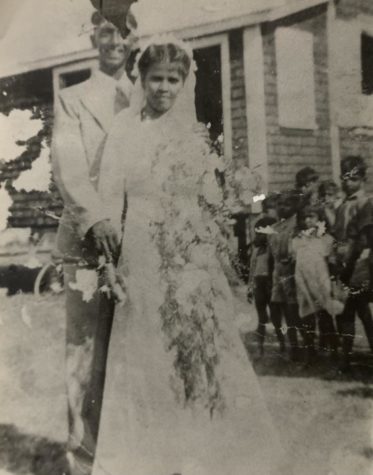
Guyanese culture is both unique and nuanced and features little bits and pieces of so many other cultures. And it’s only natural that their celebrations and holidays reflect that! There are lots of Hindu festivals — Diwali, Holi, or Navratri, for example. Similarly, people also celebrate Christian ones — like Christmas and Easter — and Muslim ones too—like Eid ul Adha and Youman-Nabi (Mawlid). Typically, these are bright and festive days during which family and friends come together to celebrate with lots of food and give thanks.
The Language
The language is where I get “tongue-tied,” both figuratively and literally. I feel a sense of sadness and frustration at myself for not knowing how to speak Hindi, the language of my people. My grandfather once said in passing that “thousands of years of history were lost in a single generation,” in reference to my inability to speak Hindi. In Guyana, not everyone speaks Hindi, but songs and prayers are usually sung in that language. When surrounded by all those who can speak Hindi fluently, I feel inferior. I’ve tried to learn a bit, and I can manage the basics of counting to one hundred or saying my daily prayers in Hindi, but that’s the extent of it.
I often get asked what language is spoken in Guyana, with many people assuming we must speak something close to Hindi. It is very common to refer to a specific item of clothing, or food, object, or even a person in Hindi. For example, I refer to my maternal grandfather as my “Nana” and my oldest female cousin as my “didi” (it means “sister,” and it’s a way of showing respect). You can read more about Hindi influences in the language here.
But our language reflects influences from so many other languages. Despite technically being considered “Guyanese-Creole,” which many presume to be “broken English,” it’s a formally recognized language of its own, particularly across the Caribbean. It intertwines Hindi, Urdu, and Amerindian influences into English, and it’s quite difficult for an outsider to understand.
III) THE LANDMARKS:
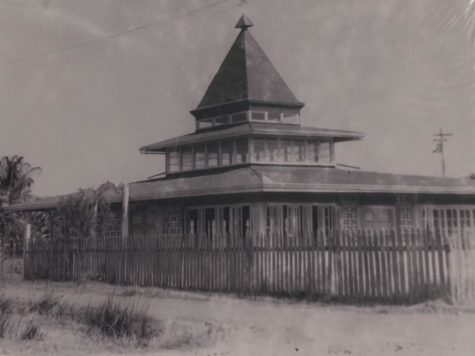
Guyana is a beautifully diverse country and is home to a myriad of stunning landmarks. One of the most breathtaking attractions that Guyana has to offer is Kaieteur Falls, which sits in the Kaieteur National Park, part of the Amazon Rainforest. This is the world’s largest single-drop waterfall by the sheer volume of water flowing over it. In the Botanical Gardens in Georgetown (the nation’s capital) sits a national monument– the Kissing Bridge. It’s been said to offer luck to young courting couples who kiss at the top of the bridge and walk over it together. There are also several intricately designed religious sites in Guyana, such as the Providence Mosque, the Radha Krishna Mandir, and St. George’s Cathedral (one of the tallest wooden churches in the world) in Georgetown, as well.
IV) THE CONCLUSION:
Writing this piece has been one of the most impactful experiences of my life, as I’ve been able to tap into such a rudimentary part of who I am and what my culture represents (both the best and worst of it, in my opinion). It’s fascinating how one can convey spoken stories into literature, setting in stone words that would have otherwise been forever forgotten through time.
Strangely enough, I’ve learned so much about my culture, my people, and my history through the writing of this journalistic piece. Perhaps this can serve as solace for future generations of Bronx Science students who feel disconnected from their culture — who feel so isolated from a culture not represented well enough at our school. I hope they can find comfort in knowing that I’ve experienced what they have, as have many others, and that they have every right to educate their peers about where they’re from. They don’t have to shrink themselves down to make it easier for others to understand, they don’t have to categorize themselves to fit into a box that isn’t theirs, and, most importantly, they don’t have to be ashamed — ashamed to not know enough, ashamed they don’t speak a language, ashamed to feel disconnected.
It’s all about one’s willingness to learn, discover, and educate.
I’m still hesitant to answer the question of where I’m from or fill out the race and ethnicity section of any survey, knowing that I’m still going to be reduced to just “Asian,” with no specificity, no recognition of an entire culture, just the name of the continent from which many of us originate.
Arianne Browne is an Editor-in-Chief for ‘The Science Survey,’ a position she’s dreamed of ever since she was a child. Writing has been her passion...










